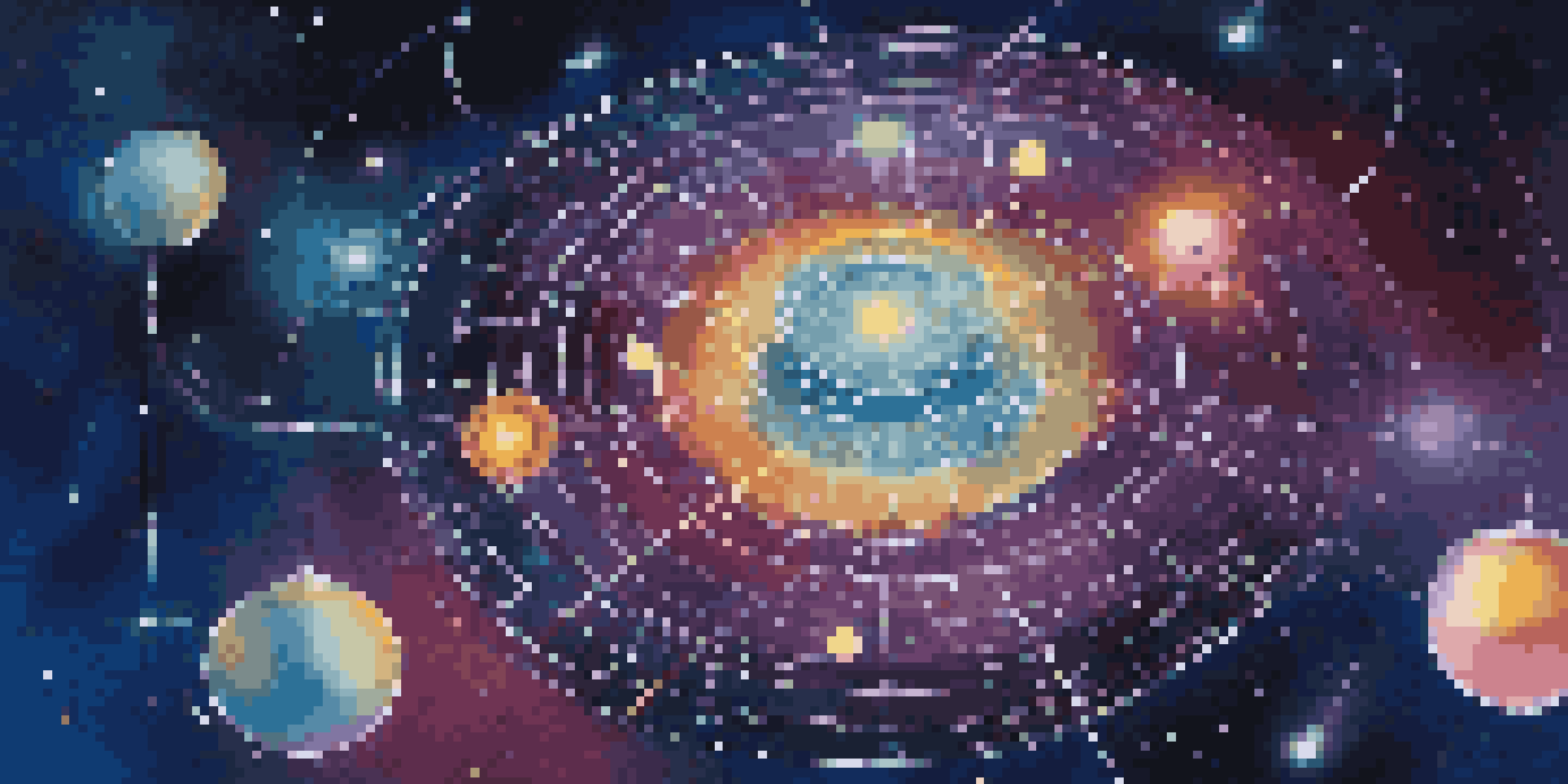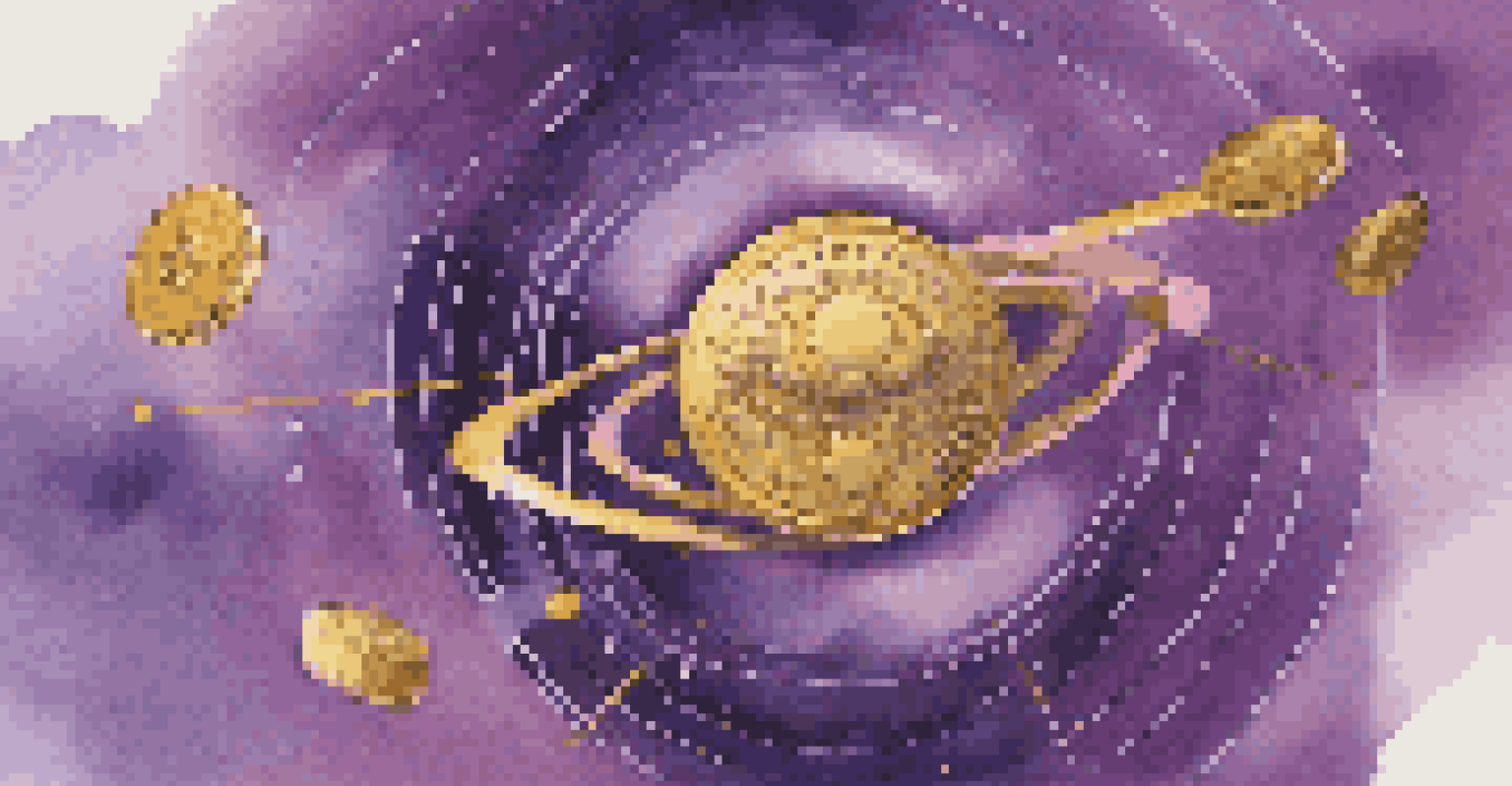A Beginner’s Guide to Quantum Computing: Key Terminology Explained

What is Quantum Computing? An Overview
Quantum computing is a cutting-edge technology that harnesses the principles of quantum mechanics to process information. Unlike classical computers, which use bits as the smallest unit of data, quantum computers use qubits. This difference allows quantum computers to perform complex calculations at unprecedented speeds, solving problems that are currently beyond our reach.
The laws of quantum mechanics can be both fascinating and perplexing, leading us to new understandings of the universe and the technology we create.
To put it simply, think of a classical computer as a very fast and efficient librarian who can only search one book at a time. In contrast, a quantum computer is like a superpowered librarian who can simultaneously explore multiple shelves of books. This capability opens up new avenues for research, cryptography, and optimization.
As we delve deeper into quantum computing, understanding its foundational concepts will help demystify this fascinating field. Let's explore some key terminology to better grasp how quantum computing works.
Understanding Qubits: The Building Blocks
At the heart of quantum computing are qubits, which are the quantum version of classical bits. A classical bit can either be a 0 or a 1, like a light switch that is either off or on. However, qubits can exist in a state of 0, 1, or both simultaneously due to a phenomenon called superposition.

Imagine a spinning coin; while it’s in the air, it can be both heads and tails at the same time until it lands. This unique property allows quantum computers to process a vast amount of information simultaneously, making them incredibly powerful for specific tasks.
Qubits: The Core of Quantum Power
Qubits, unlike classical bits, can exist in multiple states simultaneously, allowing quantum computers to process vast amounts of information at incredible speeds.
Grasping the concept of qubits is crucial for understanding the potential of quantum computing. With their ability to represent multiple states, qubits set the stage for the remarkable capabilities that quantum computers can achieve.
Superposition: The Power of Possibilities
Superposition is a fundamental principle of quantum mechanics that allows qubits to exist in multiple states at once. This means that while a classical computer processes one calculation at a time, a quantum computer can tackle many calculations simultaneously, exponentially increasing its computational power.
Quantum computing is a whole new way of thinking about how we can process information and solve problems.
To visualize superposition, think of a road with multiple paths leading to different destinations. A classical car can only take one path at a time, while a quantum car can explore all paths at once, vastly improving its chances of finding the fastest route.
Understanding superposition is essential for appreciating how quantum computing can revolutionize industries, from drug discovery to financial modeling. The ability to explore multiple possibilities simultaneously is what sets quantum computers apart from their classical counterparts.
Entanglement: Connecting Qubits in Unique Ways
Entanglement is another key concept in quantum computing, where the states of two or more qubits become interconnected in such a way that the state of one qubit instantly influences the state of another, no matter the distance between them. This phenomenon creates a unique link that classical bits cannot replicate.
Think of entangled qubits as a pair of magic dice: if you roll one and it lands on six, the other will also show six, regardless of how far apart they are. This instantaneous connection can be used to enhance communication and improve the efficiency of quantum algorithms.
Superposition Boosts Computing Power
The principle of superposition enables quantum computers to perform many calculations at once, vastly improving their problem-solving capabilities compared to classical computers.
By grasping the concept of entanglement, you can appreciate how quantum computing leverages the interconnectedness of qubits to perform complex calculations that classical computers would struggle to achieve. This is a key aspect of what makes quantum computing powerful.
Quantum Gates: The Logic of Quantum Computing
Quantum gates are the building blocks of quantum circuits, similar to logic gates in classical computing. These gates manipulate qubits through operations that change their states, allowing quantum computers to perform calculations. Common quantum gates include the Hadamard gate and the Pauli-X gate.
Imagine quantum gates as a set of special tools in a workshop. Just as a hammer or screwdriver can change the shape or position of an object, quantum gates can alter the state of qubits, making it possible to run complex algorithms.
Understanding quantum gates is crucial for anyone interested in quantum programming and algorithm design. They are essential for creating the sequences of operations that enable quantum computers to solve problems efficiently.
Quantum Algorithms: Solving Problems Efficiently
Quantum algorithms are designed to take advantage of the unique properties of quantum computing, such as superposition and entanglement, to solve specific problems more efficiently than classical algorithms. Notable examples include Shor's algorithm for factoring large numbers and Grover's algorithm for searching unsorted databases.
Consider a treasure hunt: a classical algorithm searches through the entire area one spot at a time, while a quantum algorithm can explore multiple locations simultaneously, dramatically reducing the time needed to find the treasure. This efficiency is what makes quantum algorithms so promising.
Entanglement Enhances Connectivity
Entanglement links qubits in a way that the state of one instantly affects another, creating powerful connections that boost the efficiency of quantum algorithms.
As quantum technology continues to evolve, understanding these algorithms will be key for harnessing the full potential of quantum computing. They represent the practical applications of the theoretical concepts we've discussed so far.
Challenges and Limitations of Quantum Computing
Despite its potential, quantum computing faces several challenges and limitations, including error rates, qubit coherence times, and the need for extremely low temperatures to maintain qubit stability. These issues make building practical quantum computers a complex task.
Think of quantum computing as a high-performance sports car. While it has the potential to go incredibly fast, it requires precise engineering and optimal conditions to function properly. Any minor issue can lead to significant performance drops.

Addressing these challenges is crucial for the future of quantum computing. Ongoing research and development aim to refine quantum technologies and create stable, error-resistant quantum computers that can be used in real-world applications.
The Future of Quantum Computing: What Lies Ahead
As quantum computing technology continues to advance, its potential applications are becoming more apparent. Industries such as healthcare, finance, and logistics are already exploring how quantum computing can solve complex problems and optimize processes more effectively.
Imagine a world where drug discovery takes days instead of years, or where financial models can be processed in real-time. The possibilities are vast, and as researchers overcome current challenges, the impact of quantum computing will only grow.
While we may still be in the early stages of quantum computing, the future looks promising. By understanding its key terminology and concepts, you can better appreciate the exciting developments that lie ahead in this revolutionary field.